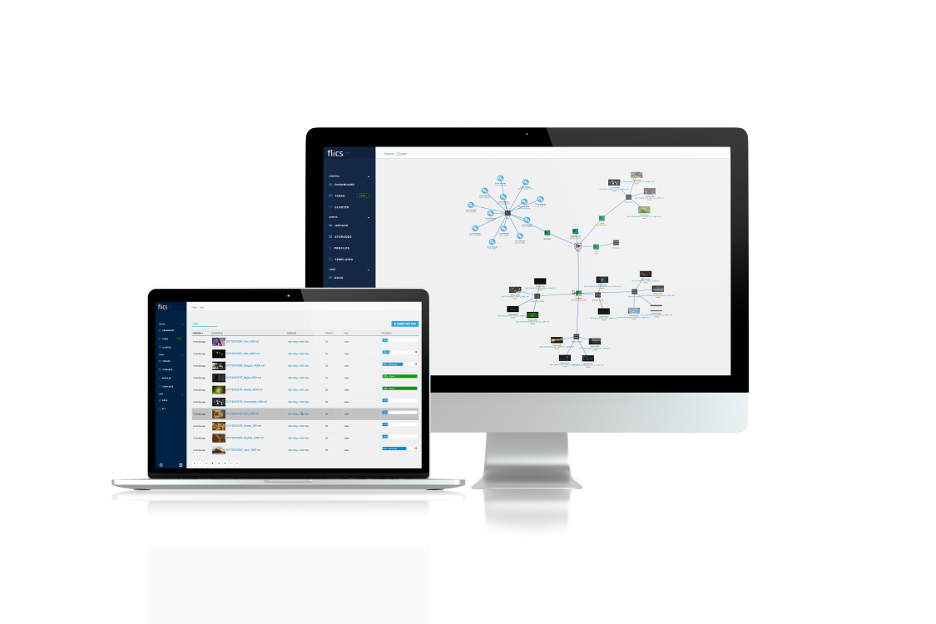"Video first" – as early as 2016, Facebook boss Marc Zuckerberg had decided to prioritize moving images on his social network. Since then, Facebook’s almost 1.5 billion daily users have been seeing videos more frequently than static posts on their timelines. A short time later the social media platform was reporting: "Every day people on Facebook consume several hundred million hours of video, more than three quarters of them on their smartphones.”
Transcoding from Hiscale’s Open Telekom Cloud
What the users don't get to see, however, is the enormous effort that goes into that. Transcoding alone requires enormous IT resources – video has to be converted into the right format with the correct aspect ratio, a resolution suitable for mobile devices and the appropriate compression rate. Recently, companies have been able to avail of capacities from the Open Telekom Cloud to do exactly that.
That’s because Hiscale, the transcoding specialist from Cologne, has recently started offering its "Flics" service from the Open Telekom Cloud thanks to a new interface. This is a growing market as, in addition to social media platforms like Facebook, there are countless other channels that distribute videos: TV stations in Europe mostly need videos with widescreen or so-called progressive scan (p) images in a resolution of 1080p or 720p, which are processed with a low compression rate in 16:9 format and a refresh rate of 50 Hertz. This is different from the United States, for example, where the refresh rate is 60 Hertz.

Users of mobile devices such as smartphones or tablets have completely different needs, because they often consume short video snippets on the move. That means the videos have to be available in higher compression in order to achieve quicker loading times. Depending on the channel, a different aspect ratio may also be required. Facebook, for example, recommends editing videos in portrait format – i.e. 4:5, 9:16 or 2:3 – because many users watch videos on their smartphone without turning it 90 degrees.
"Video applications are made for the cloud," says Ralf Hülsmann, Head of Partner Ecosystem for Cloud in T-Systems' Digital Division. "The computing power and storage requirements – both in the primary and secondary storage – are enormous. And it is often only required temporarily for certain tasks. What could be more logical than to avail of such resources only when you need them? The future of film lies in the cloud."
And Hiscale has recognized these needs. The company transcodes video data for firms such as film production companies or TV stations. But why load video material into the cloud before it has been transcoded? "Cloud users benefit from virtually endless parallelism. And thus from an enormously high speed in transcoding," says Tilo Skomudek, Chief Executive Officer at Hiscale. "Furthermore, proprietary servers capable of transcoding video are extremely expensive. In the cloud, on the other hand, companies pay only as long as they need the servers, based on usage."
The new Hiscale interface to the Open Telekom Cloud is an important addition to the Cologne-based provider’s existing cloud portfolio. And for several reasons: On the one hand, some companies insist on a cloud provider that is based in Germany. On the other hand, the film industry sees US-based cloud providers as direct competitors. "Some companies regard Amazon Web Services as a direct competitor because of Amazon's media activities. That's why some of them don't want to use that cloud provider," says Skomudek. "With our new interface to the Open Telekom Cloud, we are killing two birds with one stone: We can offer our service from a well-known German provider’s highly secure data centers and at the same time avoid any conflict of interest.”
The Hiscale interface to the Open Telekom Cloud has been available since the spring of 2018. Hiscale CEO Skomudek had another reason for expanding his cloud portfolio, in addition to IT security, data protection and the competition with Amazon: "The Open Telekom Cloud is simply the most established and therefore best German alternative to US hyperscalers. With our new interface, we now have a range of arguments to persuade customers to consider our solution, including those who probably would not have done so before.